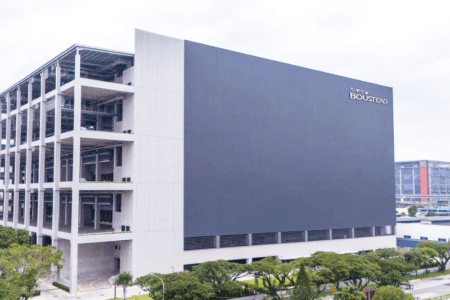Singapore Airlines Limited (SGX: C6L), or SIA, is flying into stormy skies.
Singapore’s national carrier saw its share price tumble from its 52-week high of S$7.60 to S$7.04 after it released its first quarter of fiscal 2026 (1Q FY2026) business update.
Subsequently, the blue-chip group saw its share price fall further to as low as S$6.80, capping a more than 10% decline from its year-high.
Year-to-date, shares of SIA have advanced just 5.7%, underperforming the Straits Times Index’s (SGX: ^STI) 11.1% rise.
Can SIA recover from this fall and soar high again? Read on to find out.
A mixed financial performance
For 1Q FY2026, SIA reported that total revenue inched up 1.5% year on year to S$4.8 billion.
However, total expenditure rose 3.2% year on year to S$4.4 billion as non-fuel expenses jumped 8.5% year on year to S$3.1 billion.
As a result, operating profit tumbled 13.8% year on year to S$405 million.
Net profit fared even worse, plunging by 58.8% year on year to S$186 million.
SIA’s profit was dragged down by the recognition of a share of losses from associated companies, notably Air India’s financial results, as the Indian airline was not part of the SIA group a year ago.
Developing its fleet and network
Despite the lower profits, SIA continued to renew its fleet, which remains one of the youngest in the industry with an average age of seven years and nine months.
As of 30 June 2025, SIA operated 144 passenger aircraft and seven freighters, and Scoot operated 43 passenger aircraft.
A total of three aircraft were added to SIA’s fleet during the quarter, and the airline had 72 aircraft on order at the end of the quarter.
The group’s passenger network served 129 destinations in 37 countries and territories, and Scoot is planning to ramp up its services to make up for the closure of Jetstar Asia at the end of July.
Scoot has plans to launch services to Da Nang in Vietnam and Kota Bahru in Malaysia come October 2025, as well as Nha Trang in November 2025.
The group will also ramp up capacity to various Asian destinations to accommodate Jetstar Asia’s existing passengers by offering them another option.
Advancing on its strategic initiatives
Meanwhile, SIA is also working on several important strategic initiatives.
The group signed agreements with Neste and World Energy to acquire Sustainable Aviation Fuel (SAF) in support of its decarbonisation efforts.
SIA will purchase 2,000 tonnes of SAF in the form of emissions reduction from World Energy to help reduce its carbon footprint.
Last month, the Competition and Consumer Association of Singapore granted conditional approval for a commercial joint venture (JV) between SIA and Malaysia Airlines (KLSE: 3786).
If this JV goes through, both airlines will work together on sales and marketing and expanded codeshare flights.
This partnership will benefit SIA’s customers by offering them expanded options and better flight connectivity.
Elsewhere, SIA also announced a three-year partnership with Mandai Wildlife Group to enhance Singapore’s tourism appeal.
Through this collaboration, SIA customers can enjoy curated wildlife experiences, co-branded retail collections, and other benefits.
These initiatives show SIA’s continued commitment to expanding its market share and routes, and also offering its customers a unique experience to deepen loyalty.
A bumper bonus for staff
SIA also made the news back in May when it paid out an eye-catching profit-sharing bonus of 7.45 months to employees after reporting record profits for FY2025.
The airline has recognised a one-off gain from the merger between Vistara and Air India, thereby boosting the group’s profits for the previous fiscal year.
However, back then, SIA was already feeling the strain from increased competition.
Operating profit for FY2025 fell 37% year on year to S$1.7 billion because of lower passenger yields as other airlines added capacity aggressively.
SIA also paid out a lower final dividend of S$0.30 compared to S$0.38 in the year before.
Management also warned that Trump’s tariffs could further dampen consumer sentiment and add to the weak outlook.
For its 1Q FY2026 outlook, management further warned of a volatile operating environment exacerbated by geopolitical developments and macroeconomic challenges.
Get Smart: Cloudy skies ahead
SIA is feeling the strain from higher expenses, which have eroded a significant chunk of its profits.
The airline was cognisant of tough conditions emerging back when it reported its FY2025 results, yet still paid out a bumper bonus to its staff.
The group could have conserved more cash to act as a buffer for the headwinds ahead, instead.
Though the airline has undertaken initiatives to grow its market share and broaden its customer base, the macroeconomic environment continues to be challenging.
Hence, faced with cloudy skies, SIA may need time to navigate them and could take longer than expected to post a recovery.
Don’t let market uncertainty hijack your financial dreams. While headlines scream gloom, 5 Singapore companies have been quietly building wealth and paying reliable dividends. You’re probably overlooking them. Discover these resilient giants and their secrets to sustained income, even through global storms. Click here to download your free report now and secure your financial future!
Follow us on Facebook, Instagram and Telegram for the latest investing news and analyses!
Disclosure: Royston Yang does not own shares in any of the companies mentioned.






